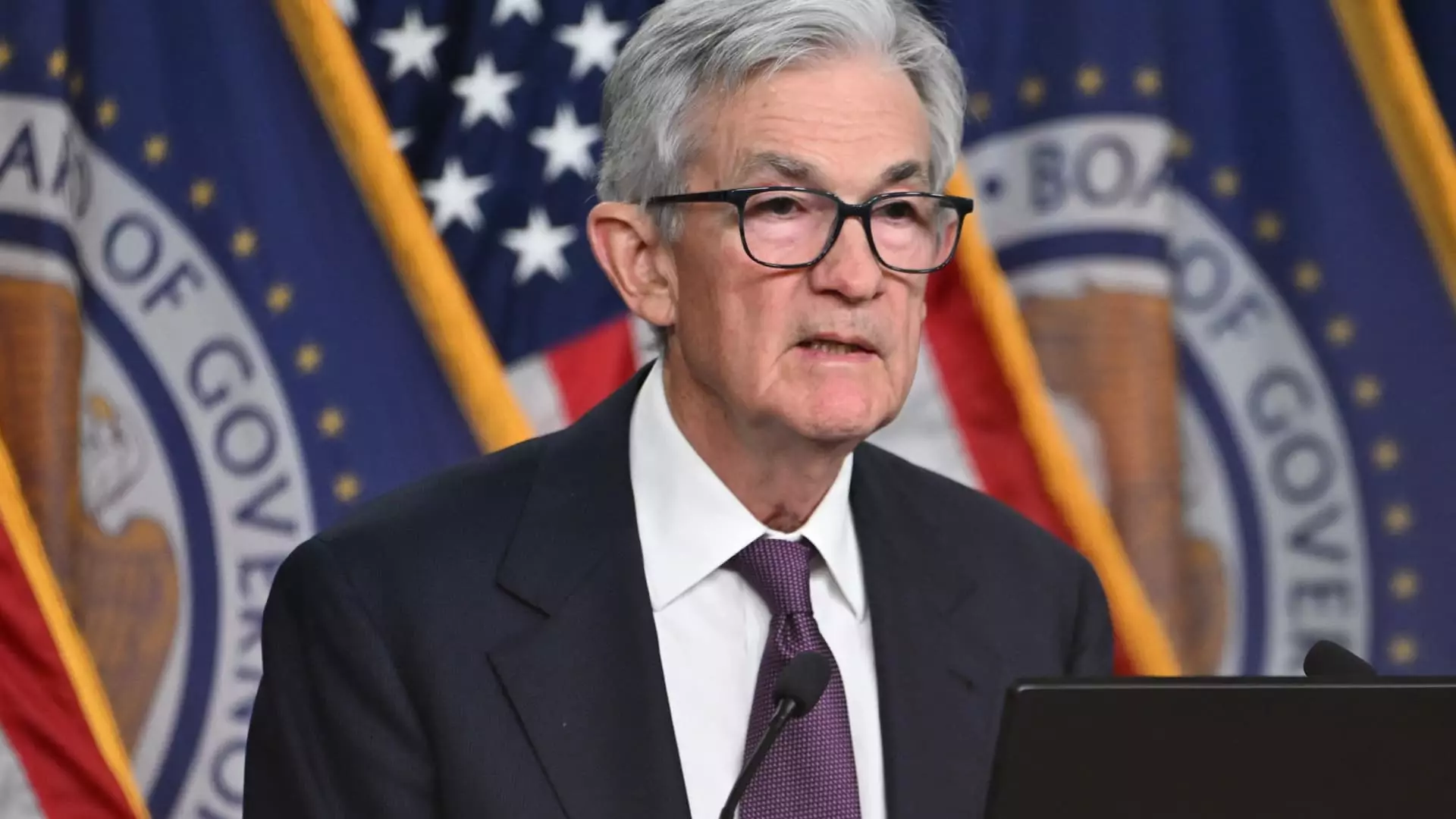On a significant day for the financial markets, the Federal Reserve announced its decision to lower its key interest rate by a quarter percentage point, marking the third sequential cut. This strategic move comes at a time when the economy presents a mixed picture—solid growth coexists with persistent inflation above the central bank’s target. The decision to drop the overnight borrowing rate to a target range of 4.25% to 4.5% has stirred discussions about its implications for future monetary policy and broader economic conditions.
Fed Chair Jerome Powell articulated a notable shift in the committee’s strategy, indicating that the central bank’s stance is less restrictive than it has been in the past. He emphasized caution concerning potential future rate adjustments, particularly given current economic indicators. Instead of the rapid-fire cuts seen recently, Powell signaled that further reductions might be paced out over the next few years, underscoring a more measured approach to monetary policy amidst an economic environment that is evolving.
Market Reactions to the Announcement
The immediate response from equity markets was starkly negative, with the Dow Jones Industrial Average plummeting over 1,100 points post-announcement. This sharp downturn suggests that investor sentiment is wary of the Fed’s cautious outlook, likely reflecting concerns over the sustainability of economic growth amid ongoing inflationary pressures. In sharp contrast, Treasury yields surged in the wake of the announcement, leading to speculation that the market anticipates a tightening environment rather than continued easing.
Futures pricing also adjusted, reflecting a muted outlook for additional rate cuts in 2025 as investors absorbed the Fed’s tempered guidance. The prevailing narrative in the market seems to suggest skepticism about the central bank’s ability to navigate a complex economic landscape dominated by high inflation and solid growth without risking a recession.
Assessing the Economic Context
Despite lowering rates, the Fed’s updated projections for economic growth for the year 2024 illustrate an enhancement to 2.5%, indicating a more optimistic view than previously held. However, there is an expectation for GDP growth to decelerate towards the long-term average of 1.8% in subsequent years. This evolving economic outlook creates a nuanced environment for policymakers. While rates are being cut, underlying economic indicators exhibit potential vulnerabilities, reflecting an intertwined yet delicate balance.
The unemployment rate is shooting down to an expected 4.2% for this year, yet inflation concerns linger as the Fed raised its estimates for both headline and core inflation. These figures now stand at 2.4% and 2.8%, respectively—both above the Fed’s designated target of 2%. This dissonance between a low unemployment figure and high inflation constitutes a particularly challenging scenario for the Fed, complicating its decision-making process.
The Fed’s updated “dot plot,” which reflects individual committee members’ expectations regarding future rate changes, indicates that the pace of rate cuts will slow significantly. With only two additional cuts projected for 2025 and subsequent expectations for reductions later, this tempered outlook signals a careful assessment of how past monetary policies are playing out in real-time. Powell’s remarks after the meeting suggest a desire for deliberation in future decisions, hinting at a strategy that prioritizes gradual adjustments over hasty decisions.
A noteworthy dissenting voice came from Cleveland Fed President Beth Hammack, who advocated for maintaining the previous rate. Her dissent exemplifies the internal complexities and varied perspectives within the committee as they navigate through uncertain economic waters.
As the Fed contemplates its trajectory in rate adjustments, there is looming uncertainty surrounding impending fiscal policies under the incoming administration. Proposed fiscal changes, including tariffs and tax cuts, have the potential to influence inflation further, necessitating a close watch on how these policies interact with the Fed’s objectives.
Powell highlighted the importance of patience and meticulous evaluation as new policies emerge. The Fed’s current calibration suggests a sensitivity to external economic factors and a recognition that robust data-driven decisions are paramount in this precarious economic climate.
The Federal Reserve’s recent rate cuts indicate a significant strategic recalibration amidst an ever-shifting economic landscape. While the intent is to foster growth and manage inflation, the commitment to measured and cautious future adjustments reflects an understanding of the economic complexities that lie ahead. As the Fed navigates these choppy waters, its decisions will undoubtedly have far-reaching consequences for both consumers and markets alike.

